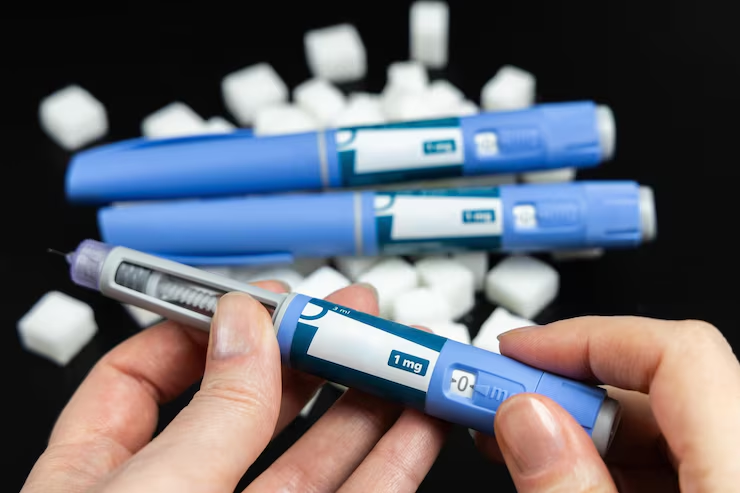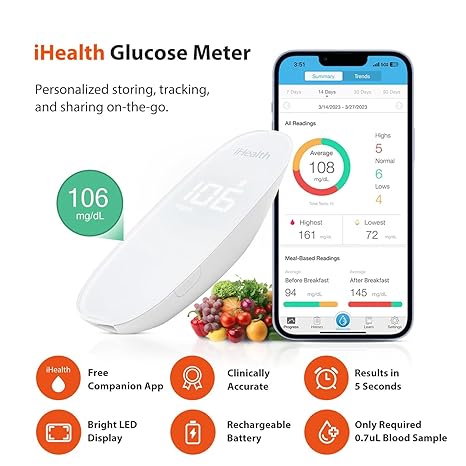How to Fix Your Insulin Resistance?
Living with insulin resistance can feel like an uphill climb. You try to eat right, move more, and follow advice, yet your blood sugar refuses to settle. Fatigue sets in. Weight loss becomes impossible. Cravings never stop. If this sounds familiar, you’re not alone—and there’s real help available. Let’s go step by step through what insulin resistance is, why it happens, and what you can do—starting today—to reverse it naturally and safely.
Understanding Insulin Resistance in Simple Terms
Your body relies on insulin, a hormone made by the pancreas, to move glucose from your blood into your cells for energy. When your cells stop responding properly to insulin, glucose stays in the bloodstream. The pancreas then produces more insulin to compensate, leading to high insulin and blood sugar levels at the same time.
Over time, this can exhaust your pancreas and push you closer to type 2 diabetes, weight gain, and other metabolic problems. But the good news is that insulin resistance is reversible. The body is resilient, and with the right changes, you can restore your insulin sensitivity and regain control.
The Warning Signs You Shouldn’t Ignore
Most people don’t realize they’re insulin resistant until it’s advanced. Common red flags include:
-
Constant fatigue even after sleeping well
-
Cravings for sweets or carbs shortly after meals
-
Weight gain around the belly that won’t budge
-
Brain fog or trouble concentrating
-
Feeling sleepy after eating
-
Dark patches on the neck, elbows, or knees (acanthosis nigricans)
-
Elevated fasting glucose or triglycerides
Recognizing these signs early helps you take action before diabetes develops.

Why You Feel Stuck: The Hidden Pain Points
You might be doing “everything right” yet still not improving. Here’s why progress often stalls:
1. Diet confusion – Too many diets promise quick results but ignore how your body processes carbs.
2. Stress overload – Chronic stress raises cortisol, which increases blood sugar even if you eat well.
3. Poor sleep – Less than 7 hours of quality rest a night reduces insulin sensitivity.
4. Sedentary habits – Long hours sitting at work limit your muscles’ ability to use glucose efficiently.
5. Hidden inflammation – Low-grade inflammation from processed foods or gut issues blocks insulin signaling.
Understanding these barriers helps you make targeted changes instead of guessing.
Step 1: Start with Food That Heals
Diet is the foundation of fixing insulin resistance. The goal isn’t starvation—it’s steady energy and fewer blood sugar spikes.
1. Choose Complex Carbs, Not Zero Carbs
Carbohydrates aren’t the enemy; the type matters. Pick whole grains, beans, vegetables, and fruit in moderation. These come with fiber that slows sugar absorption and improves satiety.
2. Focus on Protein and Healthy Fats
Protein from fish, eggs, tofu, or chicken helps balance meals and curb cravings. Healthy fats from olive oil, nuts, avocados, and seeds slow digestion and improve insulin response.
3. Cut Added Sugars and Refined Flour
Packaged foods, sodas, desserts, and white bread trigger insulin surges. Replace them with real foods your body recognizes.
4. Add Anti-Inflammatory Foods
Include turmeric, cinnamon, berries, leafy greens, and omega-3 rich fish. They reduce inflammation that interferes with insulin function.
5. Watch Portion Size
Even healthy foods can spike blood sugar if eaten in large amounts. Use smaller plates and eat slowly—this helps your brain register fullness.
6. Time Your Meals Wisely
Eating within a 10–12-hour window (for example, 8 AM to 6 PM) can give your pancreas rest and improve insulin sensitivity.
Step 2: Move Every Day—Even a Little
You don’t need a gym membership to fix insulin resistance. You just need movement. Muscles use glucose for fuel, so every bit of activity helps lower blood sugar naturally.
Start simple:
-
20–30 minutes of brisk walking after meals
-
Body-weight exercises like squats or push-ups
-
Stretching or yoga to reduce stress hormones
If you can, include resistance training twice a week. Building lean muscle mass increases how much glucose your body can handle without extra insulin.

Step 3: Manage Stress Before It Manages You
Stress is one of the most overlooked triggers of insulin resistance. When you’re tense, your body releases cortisol, which raises blood sugar and keeps it high.
Practical stress management tools include:
-
Deep breathing: 5 minutes before meals can lower cortisol.
-
Mindful prayer or meditation: calms the nervous system.
-
Limiting caffeine and screen time at night.
-
Writing down worries before bed to clear your mind.
Even a few minutes of daily calm makes a measurable difference in blood sugar control.
Step 4: Sleep—The Reset Button for Insulin
Sleep isn’t just rest—it’s hormone repair time. Studies show that sleeping fewer than 6 hours a night can raise insulin resistance by up to 30%.
Try these simple fixes:
-
Keep a consistent bedtime and wake time—even weekends.
-
Avoid screens and heavy meals 2 hours before bed.
-
Keep your bedroom dark, cool, and quiet.
-
If you struggle to sleep, herbal teas like chamomile or magnesium glycinate may help (always check with your healthcare provider).
When you sleep well, your body resets hunger hormones and uses insulin more effectively.
Step 5: Consider Supplements Wisely
Supplements aren’t magic pills, but they can support your efforts when used correctly. Based on current research and safe pharmacy practice, here are a few with promising evidence:
-
Berberine – Improves insulin sensitivity and lowers fasting glucose.
-
Cinnamon Extract (Ceylon type) – May help reduce post-meal blood sugar spikes.
-
Magnesium – Essential for insulin action; deficiency worsens resistance.
-
Chromium Picolinate – Helps insulin bind better to its receptors.
-
Alpha-Lipoic Acid (ALA) – Antioxidant that improves glucose uptake in muscles.
Always consult your pharmacist or physician before starting any supplement—especially if you take medications like metformin or insulin.
Step 6: Check Your Numbers and Track Progress
Tracking turns progress into motivation.
-
Monitor fasting glucose weekly.
-
If possible, check HbA1c every 3–6 months.
-
Measure waist circumference—losing even 2–3 inches often signals improved insulin sensitivity.
-
Note how you feel: energy, focus, hunger, sleep.
Small wins matter. When numbers improve, energy rises, and cravings fade, you know your plan is working.

Step 6: Check Your Numbers and Track Progress
Tracking turns progress into motivation.
-
Monitor fasting glucose weekly.
-
If possible, check HbA1c every 3–6 months.
-
Measure waist circumference—losing even 2–3 inches often signals improved insulin sensitivity.
-
Note how you feel: energy, focus, hunger, sleep.
Small wins matter. When numbers improve, energy rises, and cravings fade, you know your plan is working.
Step 7: Work with Professionals Who Understand
Fixing insulin resistance isn’t just about willpower—it’s about strategy. You’ll benefit most when you have support from:
-
A pharmacist (for supplement and drug safety)
-
A registered dietitian (for personalized meal plans)
-
A mental health professional (to address emotional eating, stress, or anxiety)
Each plays a unique role in helping you stay consistent and avoid burnout.
Step 8: Rebuild Your Relationship with Food
Many patients feel guilty about eating. That guilt itself becomes stress, raising blood sugar further. The goal is not perfection but balance.
If you eat something sugary, don’t punish yourself. Instead, go for a short walk, drink water, and plan your next balanced meal. Over time, these small corrections train your metabolism to stay stable without drastic diets.
Step 9: Address Mental Health Along the Way
Living with insulin resistance can be emotionally draining. Fatigue, frustration, and body image issues often weigh heavily. Acknowledging these feelings isn’t weakness—it’s strength.
-
Talk to someone you trust.
-
Seek counseling if stress eating or anxiety affects your progress.
-
Join online or local support groups for people improving their metabolic health.
Mental wellness plays a direct role in insulin control through cortisol, motivation, and consistency.
Step 10: Stay Consistent—Not Perfect
The body responds to consistency more than intensity. Missing one workout or eating a sweet doesn’t erase progress. What matters is returning to your plan the next meal, the next morning, the next opportunity.
Keep a simple checklist:
-
Did I move today?
-
Did I eat mostly real food?
-
Did I manage my stress?
-
Did I sleep enough?
Answering “yes” to even three out of four means you’re improving your insulin sensitivity every day.
Frequently Asked Questions
1. Can insulin resistance really be reversed?
Yes. Many people restore normal insulin sensitivity within months by improving diet, exercise, and sleep.
2. How fast can I see results?
Some see changes in energy and appetite in a few weeks. Blood test improvements often show within 2–3 months.
3. Should I avoid all carbohydrates?
No. Focus on quality and portion control. Complex carbs with fiber are beneficial.
4. What’s the best time to exercise?
After meals is ideal because it helps muscles use glucose immediately.
5. Can I take supplements with my medication?
Some are safe, but always check with your pharmacist or doctor to avoid interactions.
When to Seek Medical Help
If you notice blurred vision, extreme thirst, frequent urination, or unexplained weight loss, see your doctor immediately. These may indicate high blood sugar requiring medical treatment. Insulin resistance caught early is manageable; ignored, it can progress into diabetes or cardiovascular complications.
The Bottom Line
Fixing insulin resistance isn’t about deprivation—it’s about understanding your body and giving it what it truly needs. The process involves patience, small daily steps, and kindness toward yourself.
You don’t have to do it perfectly, but you do have to start. The earlier you act, the easier it is to restore your insulin balance, reclaim your energy, and prevent future complications.
Take one step today: choose a balanced meal, walk after dinner, sleep an extra hour, or replace a sugary drink with water. Each choice strengthens your body’s ability to respond to insulin. Over time, these actions add up to genuine healing.
Remember:
You’re not broken—you’re rebuilding. With consistent care, knowledge, and support, insulin resistance can be reversed, and life can feel lighter, clearer, and more in your control.
Your content goes here. Edit or remove this text inline or in the module Content settings. You can also style every aspect of this content in the module Design settings and even apply custom CSS to this text in the module Advanced settings.
